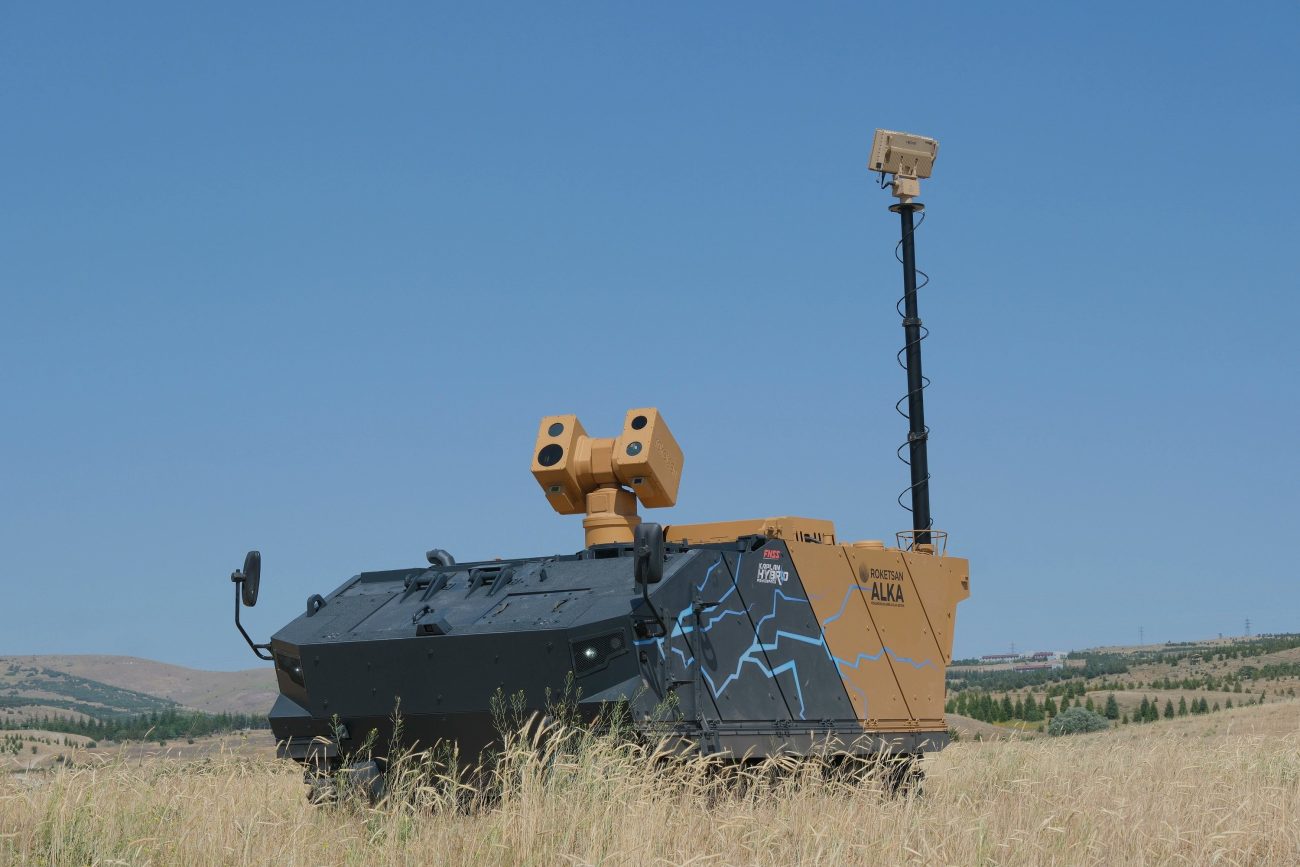Turkey appears to have enhanced its reputation as a rising and credible manufacturer and exporter of defense equipment by developing the world’s first laser tank, which can jam and destroy drones in mid-air, offering an eerie glimpse into the future of warfare.
It may sound ironic, but, indeed, a country which has gained global recognition as the pioneer in drone warfare is now developing the ALKA-KAPLAN, a laser-armed tank designed to hunt down and fry enemy drones in the air.
ALKA-KAPLAN is set to be officially showcased at IDEF 2025, Turkey’s international defense industry fair, also known as İDEF, which has been held every two years since 1993.
Now in its 17th edition, the six-day IDEF 2025 fair opened on July 22.
Developed through a collaboration between Turkish defense majors FNSS and ROKETSAN, the ALKA-KAPLAN combines the KAPLAN HYBRID tracked platform with the ALKA Directed Energy Weapon System (DEWS).
It is designed to take out dangerous flying drones while working in tandem with other tanks and infantry. Apart from protecting troops from aerial threats, it can also tackle roadside bombs and other explosive devices.
ALKA-KAPLAN’s specialty is said to be that, unlike more conventional air defense systems, it uses futuristic technology to protect friendly forces from drone attacks. It employs electromagnetic jamming and powerful lasers to target enemy drones, helicopters, and other airborne weapons.
The ALKA DEWS is reportedly a hybrid air defense system designed for close-range combat. The system can be configured in various ways: fixed, mobile, or portable. With such varied options, the tank can be deployed in versatile ways to protect urban areas, open spaces, and convoys.
It can neutralize a wide spectrum of asymmetric aerial threats, including fixed-wing and rotary-wing mini/micro UAVs and loitering munitions, before they can damage frontline assets.

The ALKA DEWS also utilizes artificial intelligence-assisted tracking and threat identification, enabling it to quickly detect, identify, and neutralize enemy drones and explosive devices.
Its design also eliminates the need for auxiliary power units, making stealthy operations easier. It is reportedly powered by the KAPLAN HYBRID Powerpack.
Apparently, FNSS designed the high-kilowatt generator to power the vehicle and provide sufficient energy to operate high-consumption systems, such as ALKA. This eliminates the need for auxiliary power units, enabling extended silent operation, which is vital for stealth and reconnaissance missions.
Using a combination of indigenously produced and locally sourced subsystems, the above is described as a hybrid propulsion architecture that enhances fuel efficiency, reduces thermal signature, and increases the vehicle’s operational range by over 10% when the generator operates in standby mode.
The ALKA system can disrupt UAVs that use advanced guidance technologies, including GPS-denied navigation and image-assisted targeting.
ROKETSAN’s engineers have been reported to have emphasized that ALKA’s layered defense, combining electronic warfare and directed energy, offers a cost-effective and scalable response to drone saturation attacks.
The ALKA-KAPLAN is designed for up to 20 tons of platforms and can be adapted for future tracked vehicle programs or modernization projects. In its design, efforts have been made to reflect Turkey’s larger plan of relying less on foreign defense technologies, particularly high-energy weapons and vehicle drivetrains.
Secondly, as demand for hybrid and directed energy systems grows globally, Turkey is reportedly positioning itself to compete in this niche segment of military technology.
It is worth noting that Turkey’s defense industry has experienced significant growth in recent years, transitioning from a reliance on foreign suppliers to become a major exporter of defense equipment. This rise is driven by a strategic push for self-sufficiency in defense and a desire to increase its global influence.
Incidentally, Turkey’s defense industry achieved a dramatic increase of more than 65% in weapons exports within just one year. Turkey’s exports have jumped year on year to reach $7.1 billion in 2024 – from $1.9 billion a decade prior – with customers across Europe and the Middle East.
It is said that, with the encouragement of President Recep Tayyip Erdoğan, Turkey’s dependency on foreign materials has decreased from 70% to 30%. The Turkish defense industry, comprising 3,500 companies, employs 100,000 people.
According to Turkish Vice President Cevdet Yilmaz, his country now exports defense products to 185 countries, with a product range exceeding 230 systems. He has reported that exports from January to April 2025 reached $2.2 billion, marking a 67% increase over the same period last year.
“Our goal is to exceed $10 billion in annual exports as soon as possible and enter the category of countries with double-digit exports,” Yilmaz stated.
According to Haluk Gorgun, president of Turkey’s Defense Industry Agency, Turkey controls 65% of the global unmanned aerial vehicle (UAV) market and is developing programs for unmanned ground and naval vehicles.
“The Turkish defense industry is the world’s 11th largest exporter,” and approximately 75% of Turkish-produced systems are used by NATO forces.
If Turkish naval chief Admiral Ercument Tatlioglu is to be believed, Ankara plans to build nuclear-powered submarines after completing the national MILDEN submarine program. This would make Turkey the seventh country worldwide to possess nuclear submarines.



